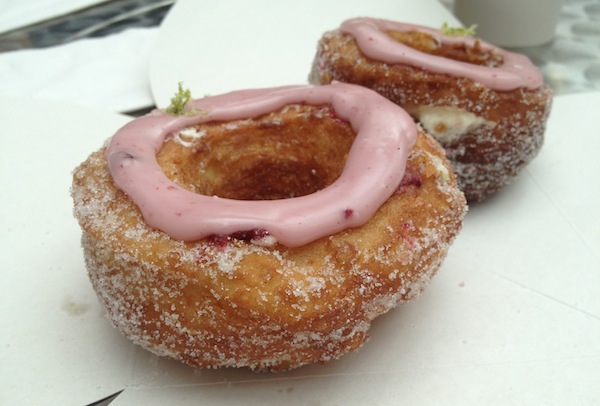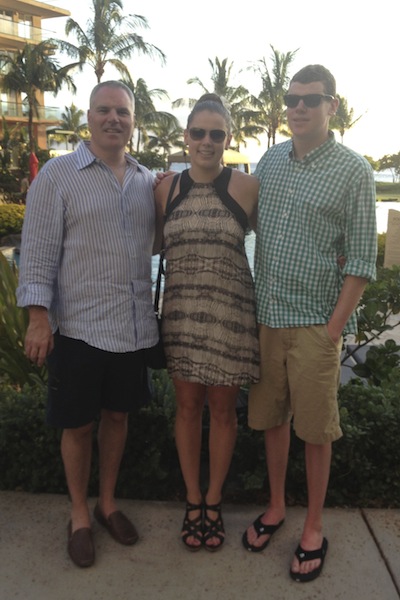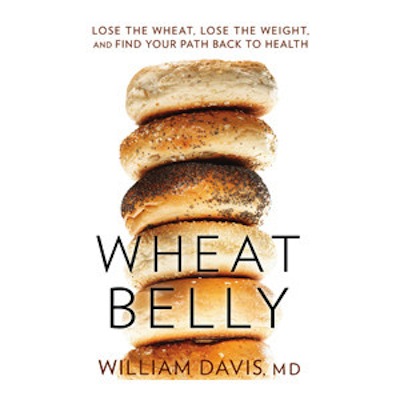
My name is Alexa, and I am a wheat addict. Again.
I don’t know how it happened. After sticking to a gluten-free diet for about 4 months last spring, I fell off the wagon. I abandoned ship when I moved to New York for the summer, a city with some truly amazing food. So the gluten started sneaking in. Lasagna at an incredible Italian restaurant, a burger at Shake Shack, I even stood in line for 4 hours for a “Cronut.” It was also tough to keep up with the price of it all—gluten-free breads, cereals and pastas were extremely pricy. I felt like I at least needed a wheat substitute if I was going to do the GF thing, but my grocery bills were getting out of control. Before I knew it, I was gluten-free no longer.

I’ve always been a carboholic—Cookies are my own personal version of crack, and bread’s like my booze. I originally took out the wheat because I was constantly exhausted, both physically and emotionally. My body and joints felt sore, I slept so much I felt narcoleptic, and I was in a constant mental foggy. After trying everything from taking B12 vitamins to iron supplements, I decided to ditch the wheat to see if the elimination would help me enjoy my life more fully.
I felt amazing. I had so much energy, lingering lower back and joint pain disappeared, my skin looked great, and I lost a few pounds. I’ve also struggled with anxiety and depression throughout my life, and after losing the wheat, my mood soared. I was happy. I worried less, and although I missed my pastries and pasta sorely, I was loving life. But, as I said, I parted ways with the plan.

Recently, I’ve noticed that I’ve been constantly sleepy, my body always feels tired, I’m getting heavier and heavier by the day, and I’ve been eating a ton of bread products. I’ve already proven to myself that the connection isn’t a coincidence, so I’m going back.
This time around, I enlisted the help of Wheat Belly, William Davis’ #1 New York Times bestseller. The words “Lose the wheat, lose the weight, and find your path back to help” are promised on the top, and it’s gotten rave reviews from both professionals and people I know personally, so I figured it might be a helpful tool to sticking to the plan this time. Here are a few things that really stuck out to me in Wheat Belly:

1. Obesity rates began climbing right around the time we were advised to eat more whole grains According to Davis, when the National Heart, Lung, and Blood Institute in the US began recommending we reduce fat and cholesterol intake and replace the calories with whole grains through its National Cholesterol Education Program in 1985, peoples’ weight starting climbing rapidly. Though a lesser evil than the processed Wonderbread category of carbs, whole grains still aren’t good for you, he claims. It’s like saying a piece of cake with 1/3 less sugar is good for you because a regular piece is bad. He calls whole grains a ‘dietary darling,’ and he’s right–the wholegrain movement has a major following.
2. Modern-day wheat isn’t the same wheat as our ancestors cultivated Though wheat has naturally evolved slightly over the centuries, over the last 50 years it has seen major changes. According to Davis, wheat strains have been hybridized and crossbred to make them less sensitive to environmental conditions. Mainly, though, the genetic changes have been induced to increase yield per acre. Making more wheat has turned out to come at a major cost to wheat’s original genetic code. Little research has been done into what the ‘new and improved’ wheat does to our bodies, so we really don’t have a gauge of what the wheat we’re actually eating is doing to us.
3. Wheat is an appetite stimulant. Wheat has an incredibly high glycemic index (GI) meaning it affects your blood sugar to a high degree. The GI of whole grain bread is 72, while straight table sugar is just 59 and a Snickers bar is 41. Though it gives your blood sugar a quick boost, it also means a quick crash just a couple of hours later, leaving you ravenous again and reaching for the first thing to satisfy your body’s craving for energy. Because the diet of people who don’t eat wheat generally has more ‘staying power,’ they get hungry less, leading them to consume 350-400 fewer calroies a day on average, according to Davis. And fewer calories translates pretty much directly to weight loss.
4. Wheat can affect parts of your body you’d never expect About a third of Wheat Belly is dedicated to breaking down all of the problems Davis claims wheat can cause. Among them: dementia, heart disease, digestive problems, poor mood, lack of energy, low sleep quality, skin issues, and even hair loss.
5. Wheat adds serious tummy pooch Davis spends a portion of his book linking wheat with weight gain, especially around your middle. High blood sugar leads to high blood insulin, which leads to insulin-driven fat deposition. This fat deposition takes the form of visceral fat, or deep belly fat that covers internal organs, making your stomach bulge out more. Call it love handles, a muffin top, or a spare tire—it’s not just aesthetically bad, it’s bad for your organs. Why does insulin-driven fat deposition affect the abdomen and middle portion of the body so much, rather than the arms or shoulders or the top of your head, asks Davis? Science hasn’t quite figured that one out yet.

The bottom line: I want my energy back, and I want to fit into my jeans comfortably. I don’t want to feel so physically tired all the time, and I want my mood to improve. So, here we go: It’s time for a gluten-free experiment, part two.
Here’s how I’m going to come at this.
Skip the Gluten Free packaged foods Not only are they expensive, but the lack of wheat and other gluten sources (like barley and rye) is made up for by adding more sugar and fat. Gluten-free foods are great alternatives for people with celiac and diagnosed gluten intolerances, but they aren’t helpful when one of the goals is to lose a bit of weight. Avoiding ‘gluten-free’ branded foods is not something I attempted last time, so this will be an added challenge. However, it’s good to know they’re there in case I’m dying for a treat. Better that than binging on a whole loaf of bakery bread or a package of Bourbon Creams when I can’t take the cravings any more.
Meal planning I’m a planner in all aspects of life, and knowing exactly what I can and cannot eat is key for making this last for me. I’m a picky eater, unfortunately, but having a list of my options that I enjoy is sure to be helpful. Davis put together a handy chart of three categories of food for optimum health: Consume in unlimited quantities, consume in limited quantities, and consume rarely or never.

A few things I can eat as much as I want of:
- Vegetables, except potatoes and corn
- Raw nuts and seeds
- Oils, the healthy kind, not hydrogeronated or polyunsaturated (like sunflower, grapeseed, and soybean oil)
- Meats and eggs, preferably free-range and organic
- Cheese
- Non-sugary condiments and spices (one of his biggest tips to spicing up food without gluten)
The foods I should limit:
- Dairy, besides cheese
- Fruit, because of the high sugar content
- Potatoes and nonwheat, nongluten grains like quinoa, oats, and rice (they can have a large impact on blood sugar when more than a half cup is consumed)
The no-nos:
- Wheat (duh)
- “Gluten-free” foods
- Dried fruit and other sugary snacks
- Fried food
Reminding myself of the the consequences of eating wheat I hate feeling exhausted, I hate feeling fat, and I hate being in a bad mood (who doesn’t?). Now that I know that eliminating wheat from my diet is helpful to me in many aspects of my life, I’ll be trying to keep that in mind for every Pret a Manger ham and cheese toastie I begrudgingly pass up or Ben’s Cookies stand I pass with a tear in my eye, I’m better off without it.
I solemnly swear to be completely and totally honest with my struggles, setbacks, and victories over the next six weeks. I will tell the whole truth, and nothing but the truth. I know I’ve got you guys to keep me accountable, so here we go.
My starting weight: 84.9 kg. I’m 5’8”.
I literally just weighed myself and now I’m panicking–sharing that number is more intimate to me than describing my first bikini wax, but actually learning that number definitively is much scarier. Excuse me while I go take our editor Anna’s advice.
READ MORE: The Gluten-Free diaries – Week Two
Any tips for me, gluten-free Healthistas? I’d love to hear!
Alexa blogs at 100littlevictories.com.
Like this article? Sign up to our newsletter to get more articles like this delivered straight to your inbox.




















































